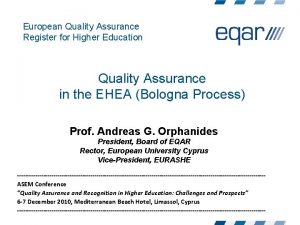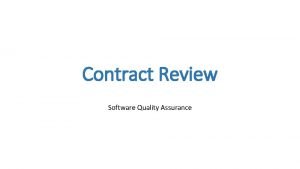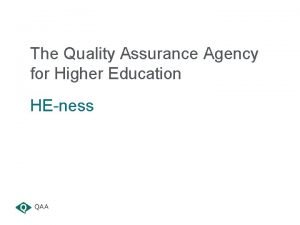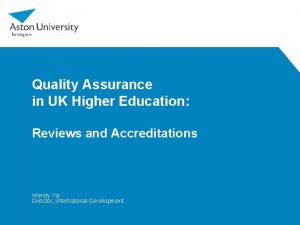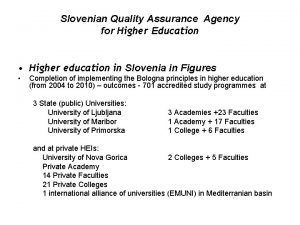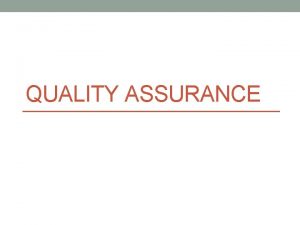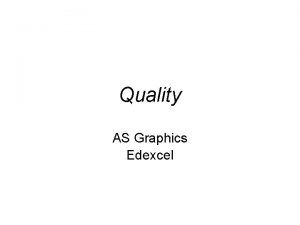Slovenian Quality Assurance Agency for Higher Education Higher








- Slides: 8

Slovenian Quality Assurance Agency for Higher Education • Higher education in Slovenia in Figures • Completion of implementing the Bologna principles in higher education (from 2004 to 2010) – outcomes - 701 accredited study programmes at 3 State (public) Universities: University of Ljubljana University of Maribor University of Primorska 3 Academies +23 Faculties 1 Academy + 17 Faculties 1 College + 6 Faculties and at private HEIs: University of Nova Gorica 2 Colleges + 5 Faculties Private Academy 14 Private Faculties 21 Private Colleges 1 international alliance of universities (EMUNI) in Mediterranian basin


Number of Students (2008) Public Number of students Full time Part time 75572 63592 11980 Incorporated 3498 2177 1321 Private 3752 420 3332 82822 66189 16633

Quality assurance in higher education History: 1993; …. 2006…. 2009 (HE acts) Change in 2009 – Reasoning: - Quality is priority; - Greater demand (HEIs, study programmes); - Professionalization of the QA process (Experts); - Trust in the QA System (Public authority body); - Total compliance with the ESG.

Quality assurance in higher education Major principles of QA System in Slovenia (HE Act): - Professionalization of external QA system (Accreditation, external evaluation, re-accrediation); - Independence of Stakeholders (Nomination of 11 members of the council); - Prevention of interest conflict (self-exclusion from council’s decision making); - Transparency; - Transparent procedures and their follow-up (7 years); - Extraordinary external evaluations (less than 7 years).

Quality Assurance Standards and Procedures • • • Still in draft version – waiting for the decision to be made by the agency council. Basics: – Connection of first accreditation and re-accrediation (7 years follow-up) in the framework of common concept and methodology; – Basic formulata: firs accrediation, self-evaluations, external (extraordinary) evaluation, re-accrediation; – Connection of quality assurance standards and procedures; – Self-evaluation – base-line input for external evaluation. New (electronic) application form (transparency of meeting the acreditation demands; statistics; building of the common higher education information system being consisted of RD, HE, employment, and social policy).

Topics – to be completed immediately • • • 2010 – 2011: first cycle of regular re-accrediations needed to be executed (approx. 40 study programmes in the 6 HEIs). The effecient carrying out procedure!? Institutional and programme external evaluations and related reaccrediations to be done! ? Whether to extend the study programme evaluation to all/ the majority of study programmes at externaly evaluated HEI? ! The selection of the evaluators in regard to high academic standards (CV, bibliography). National and international evaluators. National evaluators training. SQAA – close collaboration with international QAAs (international evaluators!), approaching the ENQA, and EQAR memberships; active approach. The HE Act renovation (expected in early 2011).

The SQAA bodies – Agency Council (11 members); – Director (public tender – out – waiting for candidates), and – Appealing Committee (high level of independence needed – 5 years of work at/with the court; public tender – out – waiting for candidates).
